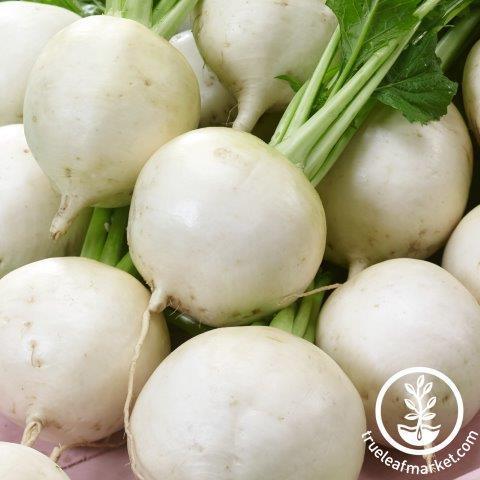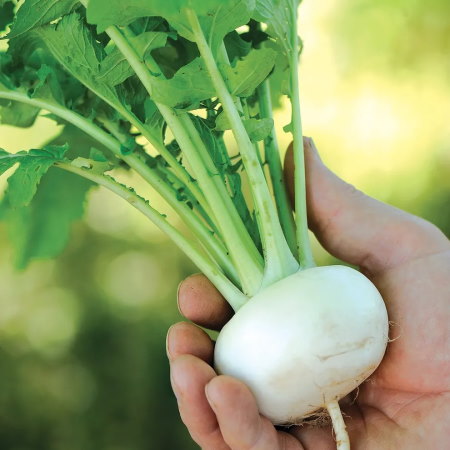How to grow turnips – sow and grow the crop throughout the year for an abundance of tasty roots
All you need to know to grow and harvest different types of turnips

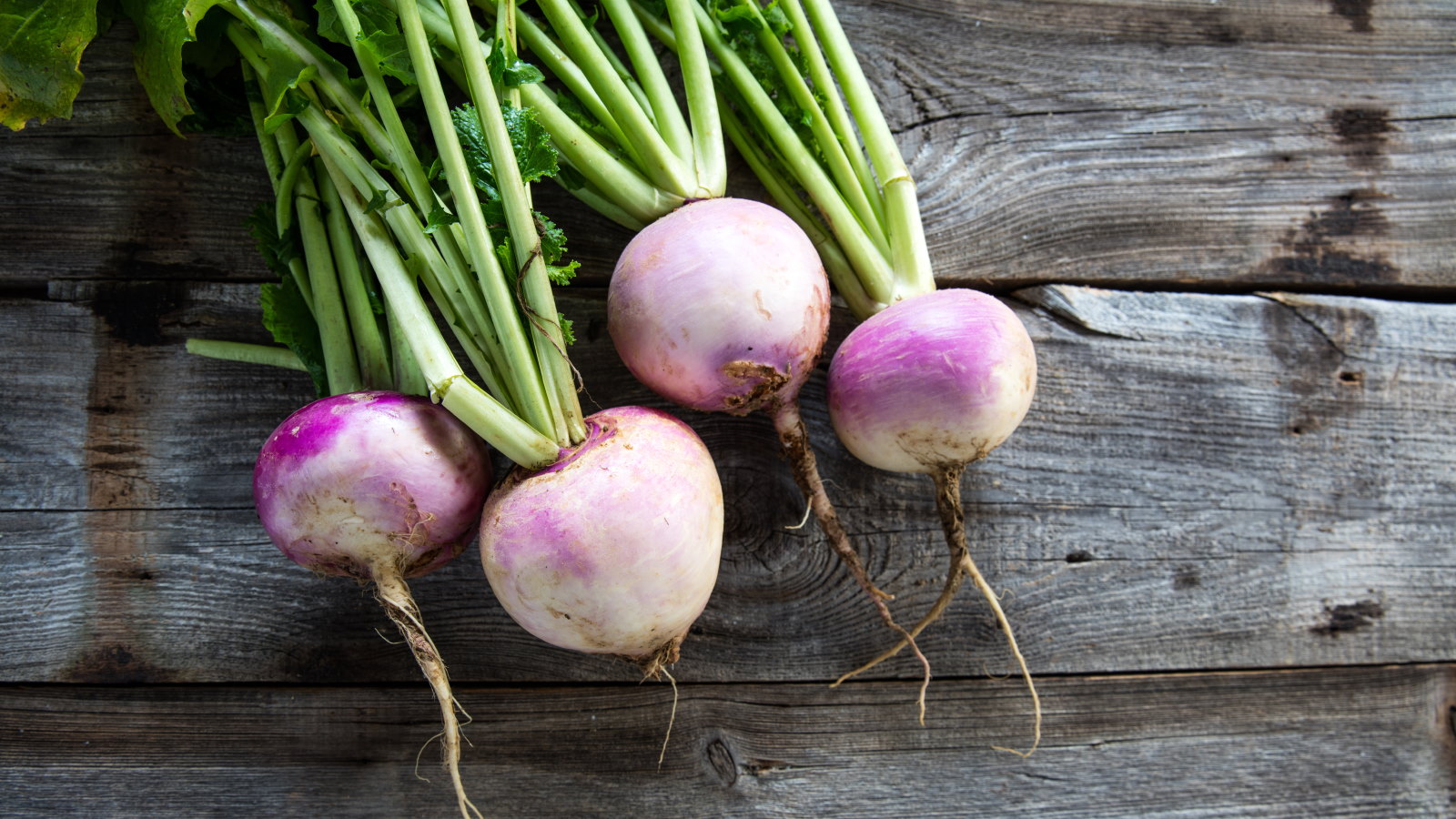
Turnips are fast-growing vegetables cultivated for mild, spicy roots and also for edible greens. You can grow and harvest this versatile crop throughout the year, and eat it raw or cooked.
Turnips come in different colors, shapes, and sizes. They can be flat or round and have white or purple skins, while early and maincrop varieties are suitable for growing at certain times of year. Whatever type you choose to plant in your vegetable garden, they are simple crops to grow from seed.
Turnips have always been a yearly crop in vegetable gardens I worked in and also on my home allotment plot. I have grown many different types over the years, however, the two turnip varieties of ‘White Snowball’ and ‘Purple Top’ were particularly popular with chefs I grew and harvested crops for.

Choose whether to grow purple or white turnips
A guide to growing and harvest turnips
If you want to discover how to plant turnip seeds and cultivate a good crop, we cover how to grow all varieties of turnips, from sowing to harvesting.
It should be noted that turnips are different to rutabaga. Many people struggle to differentiate between the two and class them as the same vegetable, however, rutabaga are larger than turnips, have different colored flesh, and a sweeter flavor.
When to plant turnips
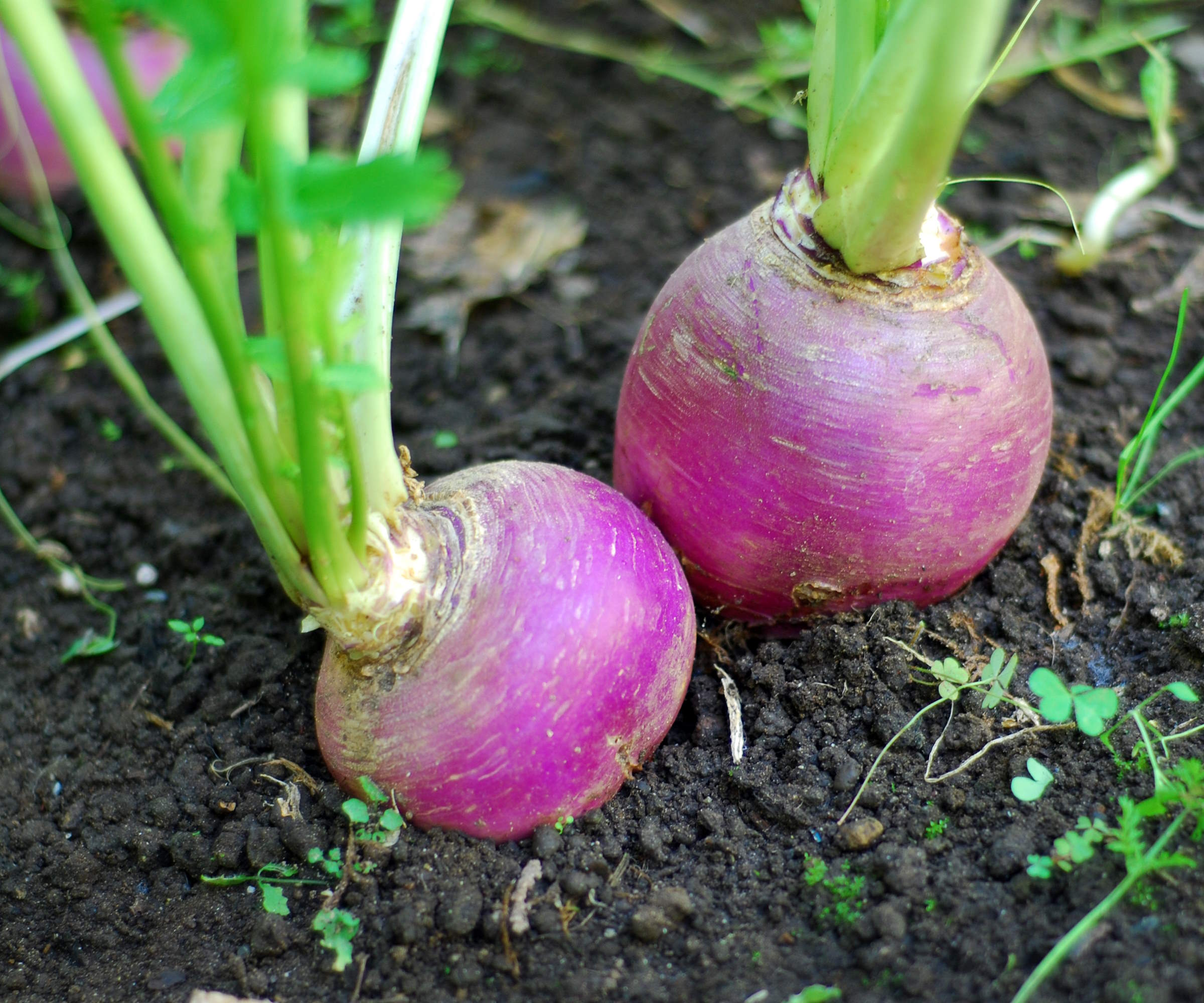
Turnips need space to grow and develop the edible bulbous roots
Turnips are fast-growing vegetables that can be planted at various times throughout the year. They are best planted successionaly for a long season of roots to harvest and are also great options for filling gaps in a vegetable garden during the season.
- The earliest sowings of turnips can be done undercover in early spring. Sowing in a cold greenhouse or cold frame, or under cloches, can provide a harvest in late spring and early summer
- The main season to sow is from spring and early summer for harvests from mid-summer through to the middle of October. Early varieties of turnips are best for sowing in spring and early summer.
- Maincrop varieties of turnips can be sown in mid-to-late summer and early fall for roots to harvest in late fall and winter
How to grow turnips from seed
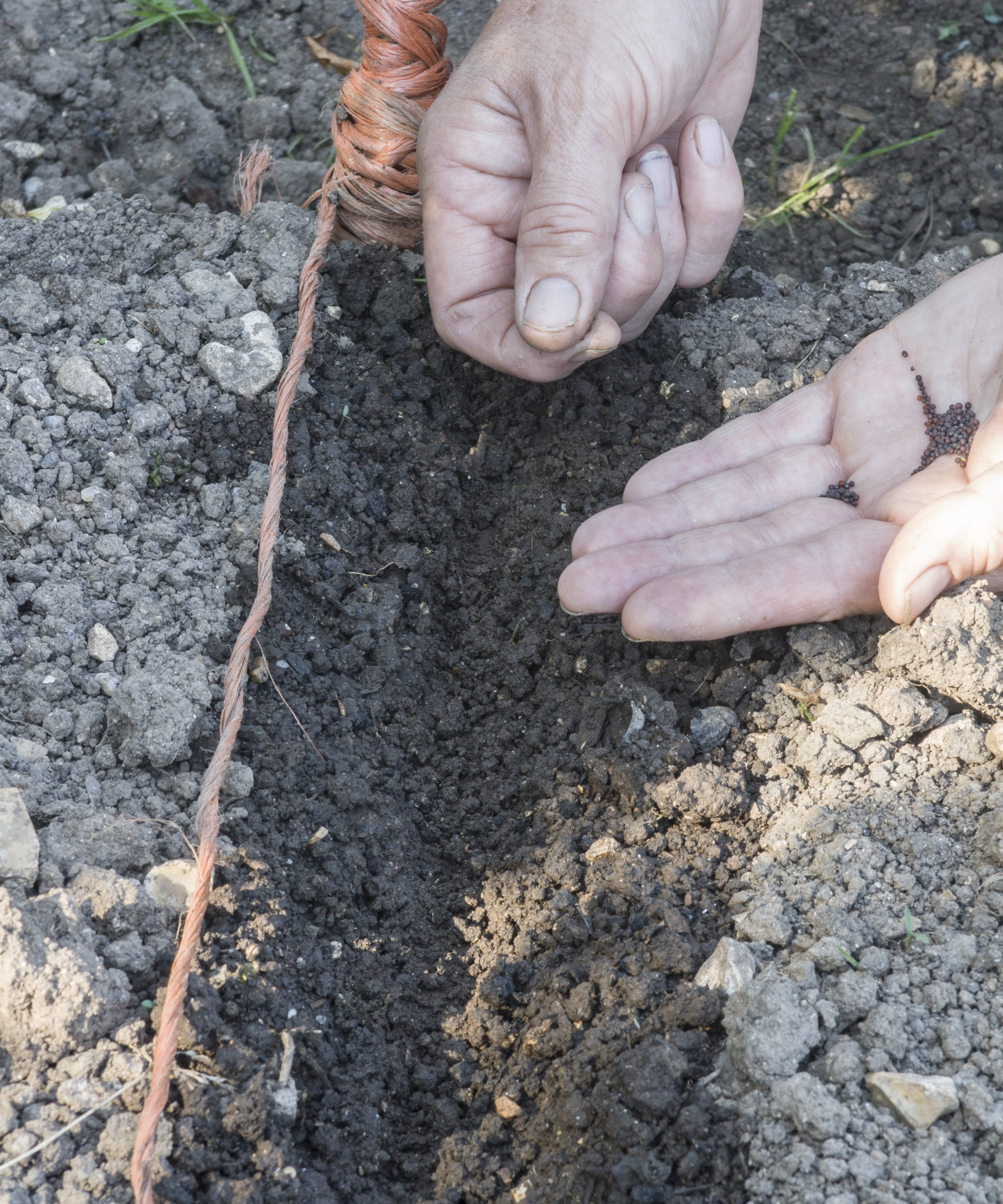
Growing turnips from seed is very simple
Turnips are best sown directly into their growing position - I have always enjoyed great success sowing seeds outdoors directly and there are specific reasons why direct sowing is always the best route for a great crop of roots.
Design expertise in your inbox – from inspiring decorating ideas and beautiful celebrity homes to practical gardening advice and shopping round-ups.
As Rebecca Sears, resident green thumb at Ferry-Morse, explains: ‘Turnips have a taproot that is easily disturbed when transplanted, often leading to stunted growth or failure. Direct sowing allows the taproot to develop undisturbed from the start, resulting in healthier and larger turnips.’
Any bed for sowing turnips has to be weeded and raked to a fine tilth before sowing. Turnips are brassica crops, so as part of crop rotation avoid planting them in a spot where any other brassicas were grown in the last three years.
‘A location that receives at least six to eight hours of direct sunlight per day is ideal,’ adds Rebecca Sears. ‘Loose soil is essential for optimal root growth, so consider adding compost or organic matter to improve soil texture.’
Here is my guide to how to sow turnips in seven simple steps:
- Make a drill a half-inch deep in the soil
- Lightly water along the base of the drill to initially moisten the soil and help with germination
- Thinly sow the turnip seeds around one inch apart
- Carefully cover the seeds with a half-inch of soil and water the row straight away using a watering can with a fine rose attached - to not disturb the soil
- If sowing multiple rows, space the rows 12-18 inches apart
- Keep the soil evenly moist, but not waterlogged, to ensure good germination
- Thin the seedlings as they appear to be around six inches apart for good-sized roots
Keep the area weed-free as the turnips develop, I find regularly running around plants with a garden hoe the quickest and easiest way to get weeds when they are young. Check regularly and water the crop when required, turnips want consistently moist soil throughout the season for strong growth and avoid the roots becoming woody. If you add compost or organic matter before planting, no other additional fertilization is required.

As CMO and resident green thumb for the Green Garden family of brands, Rebecca Sears nurtures the company's heritage but also looks to develop new products and solutions to help gardeners of all skill levels fuel their passion and become more successful in the garden. Rebecca has been gardening from coast to coast, first realizing her passion while living in Portland, Oregon, inspired by the public gardens throughout the city.
Shop turnip seeds
How to harvest turnips
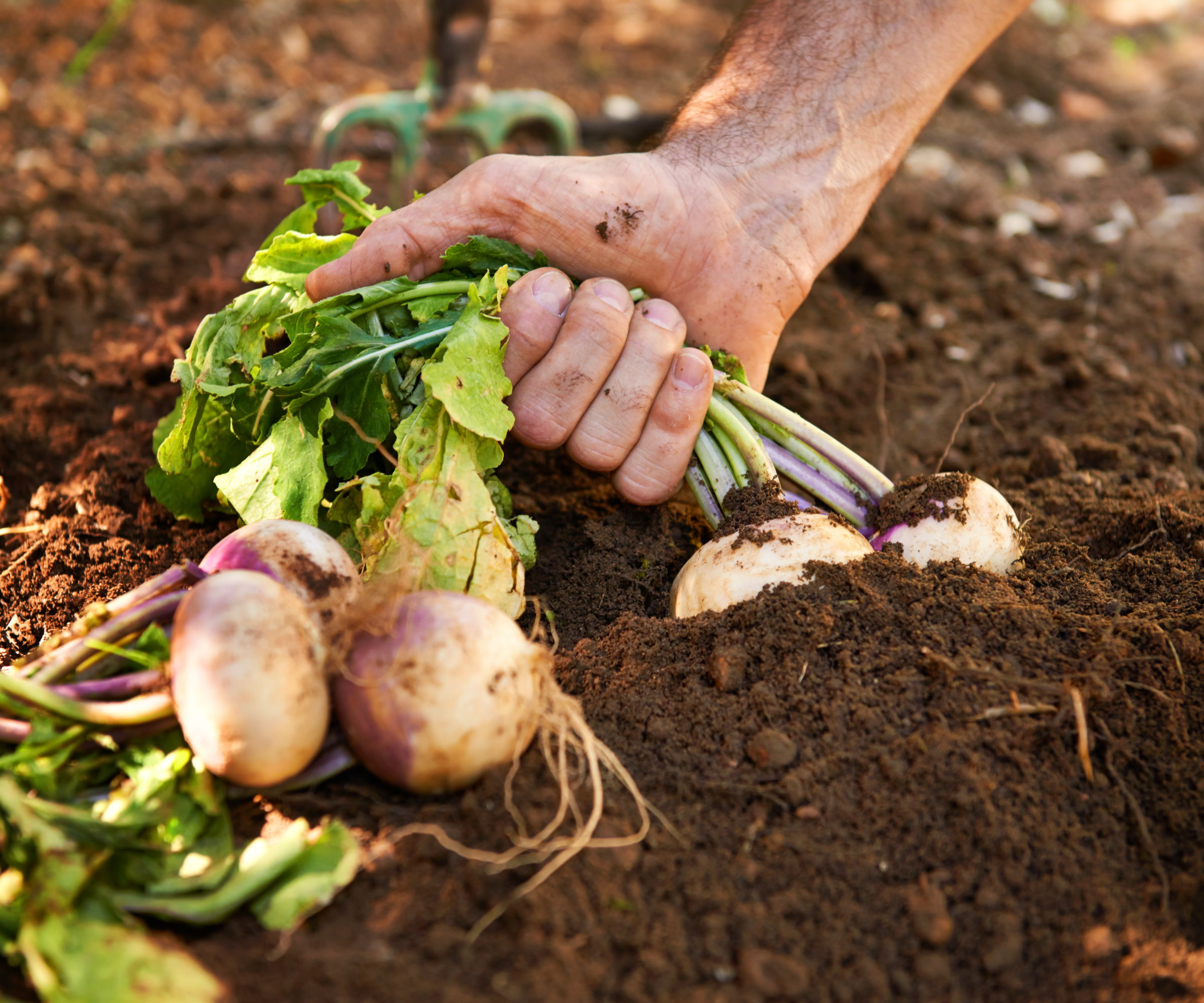
Growing turnips can provide harvests in summer, fall, and winter
As mentioned before, turnips are fast-growing vegetables that want to be picked when they are most flavorful and have the best texture. Older and larger turnips turn bitter and woody and it is a harvesting mistake to waste lots of roots by allowing them to get to past their best.
‘Turnips are best harvested when they are young and tender, typically around 2-3 inches in diameter,’ recommends Rebecca Sears from Ferry-Morse. It can take just six weeks for early varieties to reach maturity from sowing and around 10-12 weeks for maincrop turnips.
A light frost in fall can sweeten the flavor of maincrop turnips, however, the roots should be lifted ahead of the winter hard freezes. Mulching around the turnips with straw can protect the roots and allow the crop to sit in the soil over winter in milder climates. If you live in colder regions, or have heavy soil, lift the roots to store for winter.
Take care when harvesting turnips not to damage the roots. The best method is to use a fork or spade and put the garden tool into the soil next to the turnip to loosen the soil to make it easier to pull the root out of the ground.
You can harvest turnip greens as the roots develop, or regrow a turnip from scraps for a crop of turnip greens. The tops of the turnips are edible and full of nutrients. Once the roots are developing, harvest individual turnip greens sparingly as a cut and come again crop. Avoid taking too many leaves in one go to impair the development of the root.
How to grow turnips in containers
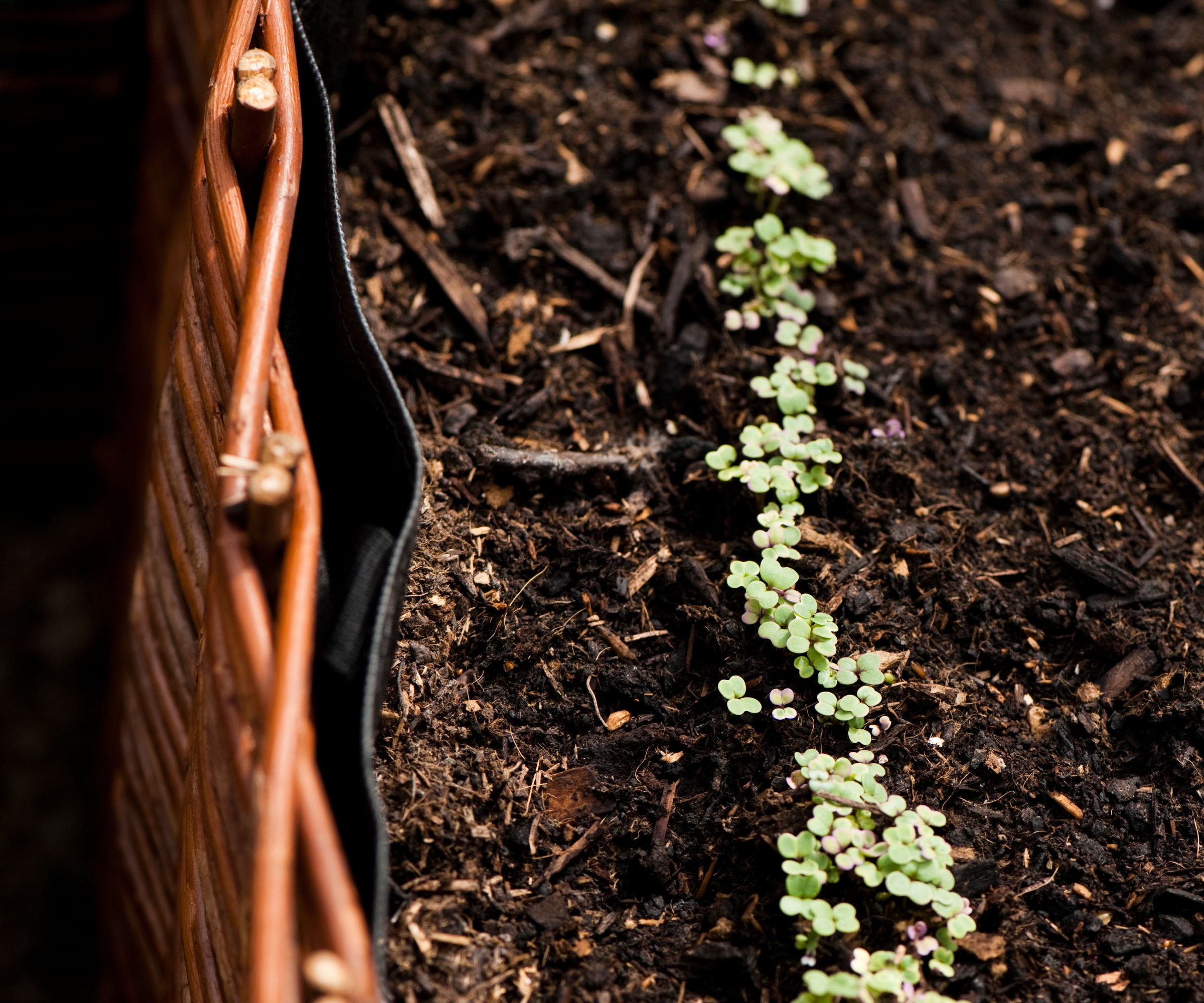
Turnips must be thinned in containers to give the plants space to grow
Turnips are suitable for vegetable container gardens if you want to cultivate the crop on a patio, deck, or balcony. It is also a vegetable perfectly suited for growing successfully in raised beds. The smaller, earlier varieties of turnips are best suited for cultivating in pots.
If you are thinking of growing turnips in pots, pick a container at least 16 inches wide and eight inches deep with holes in the bottom for drainage. Fill the pot with light and fertile potting soil - such as this organic potting mix available at Walmart. Thinly sow the seeds directly onto the soil surface and cover with a thin layer of additional soil. Thin the seedlings as they germinate so each turnip has at least four inches of space.
Place the pot in a sunny position and keep the soil consistently moist throughout the growing season. Using a soil moisture meter, available at Amazon, can help when watering plants in containers - or you can check the moisture levels a few inches underneath the soil surface using your fingers. Harvest the turnips when they are 2-3 inches in diameter.
FAQs
Do turnips come back every year?
Turnips are biennial plants that are grown as annuals each year. If the roots are left in the ground over winter they will start to produce flower shoots and go to seed when they resume growing again in spring.
Should I let my turnips flower?
If a turnip goes to flower, the root will be very woody and bitter - it will be unsuitable to eat. You can leave the flowering turnip to produce seed and then collect the seeds to sow next year. If you grow two different types of turnips and let them flower, they can cross-pollinate and there will be no guarantee what crops the resulting free seeds will produce.
If you seek new vegetables to plant in a backyard kitchen garden, why not consider growing kohlrabi along with turnips? Kohlrabi, also called 'German turnips', are grown for their edible swollen stems and the unique crop can be sown between March and August for a long harvesting season.

Drew has worked as a writer since 2008 and was also a professional gardener for many years. As a trained horticulturist, he worked in prestigious historic gardens, including Hanbury Hall and the world-famous Hidcote Manor Garden. He also spent time as a specialist kitchen gardener at Soho Farmhouse and Netherby Hall, where he grew vegetables, fruit, herbs, and cut flowers for restaurants. Drew has written for numerous print and online publications and is an allotment holder and garden blogger. He is shortlisted for the Digital Gardening Writer of the Year at the 2025 Garden Media Guild Awards.

